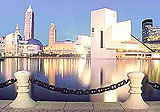op-ed 社论版对面
|
An op-ed, abbreviated from opposite the editorial page, is a newspaper article that expresses the opinions of a named writer who is usually unaffiliated with the newspaper's editorial board. These are different from editorials (which are usually unsigned and written by editorial board members) and letters to the editor (which are submitted by readers of the journal or newspaper). Op-ed其实是opposite the editorial page(社论版对面)的缩写,指发表在报纸上、由非本报评论部员工撰写的署名评论文章,与社论(由本报评论部员工撰写的非署名评论文章)和读者来信(期刊或报纸读者提交的文章)均有不同。 Although standard editorial pages have been printed by newspapers for many centuries, the direct ancestor to the modern op-ed page was created in 1921 by Herbert Bayard Swope of The New York Evening World. When he took over as editor in 1920, he realized that the page opposite the editorials was "a catchall for book reviews, society boilerplate, and obituaries". He is quoted as writing: “It occurred to me that nothing is more interesting than opinion when opinion is interesting, so I devised a method of cleaning off the page opposite the editorial, which became the most important in America ... and thereon I decided to print opinions, ignoring facts.” 虽说报纸上开设正规的社论版已经有几百年的历史了,不过现代报纸评论版的鼻祖却在1921年才出现,是由《纽约世界晚报》的赫伯特•贝亚德•斯沃普开创的。他在1920年接任该报主编时,发现社论版对面的版面“混杂着书评、各类通用文本和讣告”。他曾经写道:“我意识到,如果评论有意思,那一定会是最吸引人的部分,于是,我想出了一个清理社论版对面那个版面的办法,此举是当时美国最重要的变革…自那以后,我就决定在那个版发评论,不发事实了。” But Swope included only opinions by employees of his newspaper, and the first "modern" op-ed page—that is, one that called on contributors outside the newspaper—had to wait until its launch in 1970, under the direction of The New York Times editor John B. Oakes. 不过,当时斯沃普只在评论版刊发自己报社员工写的评论,第一个“现代”意义的评论版,也就是由报社以外的人士供稿的评论版,直到1970年才出现,是由时任《纽约时报》主编约翰 B. 欧克斯开创的。 |






![纳什维尔[美国田纳西州首府]](/uploads/shenghuo/2023/12/06/10132596410.jpg)

